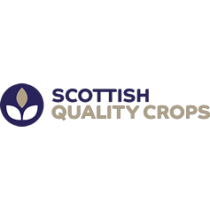Although later than the norm, harvest eventually started with a flourish and the usual flurry of activity on 8th August, with KWS Cassia Winter barley producing a very pleasing 8.9 tonnes per Hectare. At 17% moisture we thought harvest would be easy! Then the rain started and it was three days before we could harvest again, surprisingly the quality remained excellent with lovely bold bright coloured grain although the moisture had crept up to 20% and the straw was still quite green.
Next up the Oil Seed Rape. If only it would dry up and let the crop ripen! Late maturity and lack of sunshine could be a long running theme throughout this harvest. I know you can't farm by the calender and each year is different, but not being the patient type it is extremely frustrating waiting and watching for the crops to ripen. This frustration being compounded by the fact that ground is so saturated that any cultivations are impossible.
August 21st. Having been desiccated seventeen days earlier, the first OSR is ready to harvest. By coincidence, this is the same date as our previous latest OSR harvest finish. At least the weather has at last dried up and initial yields look good better than our five year average, all be it at very high moisture content around 16/17%. With the safe storage moisture 9% or better drying costs are going to be high this year.
August 26th. What a different a few good days make, zipping through the Oil Seed Rape 45 to 50 Hectare per day, moisture content still high but now at manageable levels in the low teens.
29th August - All OSR combined and dried into the store at Brae of Pert. In summary mixed results from record high 5.6tonnes per Hectare all the way down to a rather less pleasing 3.2 tonnes giving an overall figure of 5.25 tonnes (2.1 ton per acre in old money). Within that average figure are some extremely good spot rates of 7.5 tonnes and one field having over 75% of the area yielding better than 5.0 tonnes per Hectare.
With low temperatures and July/August rainfall at 150% of normal for this part of the country, the wheat harvest was always going to be a struggle
And so it proved to be. We started cutting wheat on 9th September at 20% moisture only managing 55 hectares before the rain which continued for almost a week. Almost in desperation we continued harvesting on the 15th the grain was at 25/26% moisture, making for very slow progress and the interesting situation that the unloading auger could not cope with the wet grain, so even while unloading into the trailer the grain tank was filling quicker than it could unload. On 26th September and much to everyone's relief the decision was made to stop cutting wheat and move into the Spring Oats which were now ripe and would spoil quickly if we delayed further. This proved to be a great success as not only did the Oats prove to be the star crop of the harvest, it allowed Ian to catch up on drying the huge pile of very wet wheat lying outside the grain store. The Oats were a treat to combine standing well and drying nicely as the sun eventual appeared. I said the Oats were the star crop and exceptionally good they were, yielding 7 to 8 tonnes per hectare with excellent quality.
Finally back to the wheat and the last big push to get everything safely into store. At this point I mush thank everyone for the huge effort and long hours required, Gary, Martin, John, Chris and Finlay (who gave up his holiday to drive the combine for the last few days) not forgetting Ian who battled manfully to get everything dried and safely into store. The last wheat was combined on the 1st of October. I only hope this does not become the norm. The surprising thing being that despite the low temperatures and crops being extremely slow to ripen, yields and quality have been better than average. The down side being that the same applies to most of the country resulting in a bumper harvest and rock bottom price.
This harvest was a struggle at times, but still hugely enjoyable, and with autumn drilled cereals established and looking well. Bring on next harvest.
Gordon Cairns



